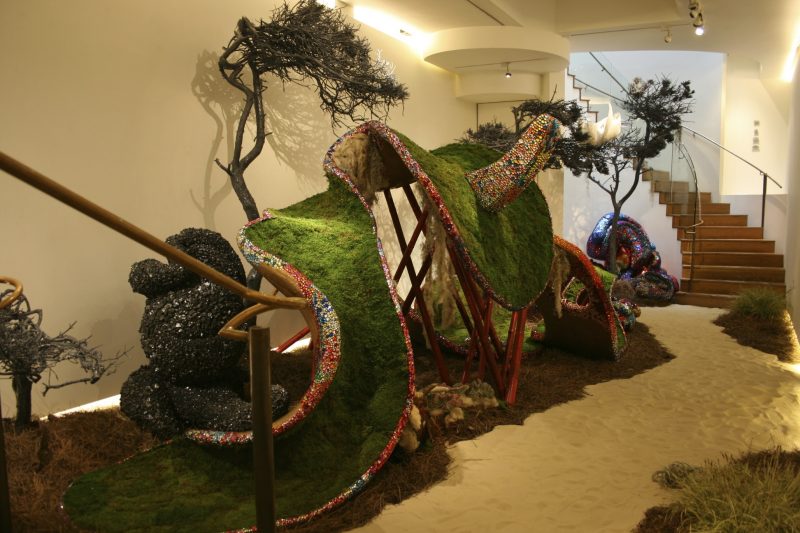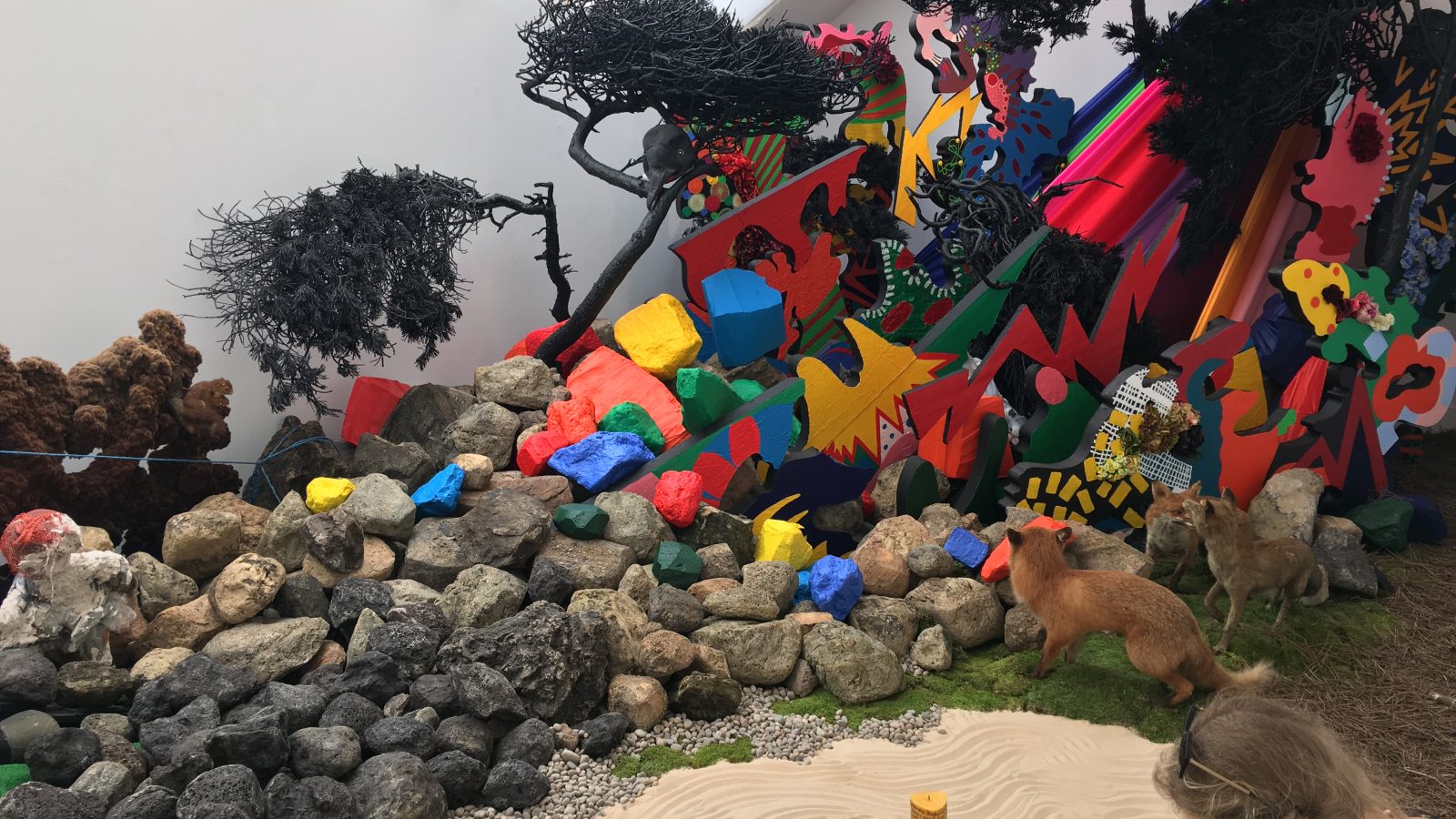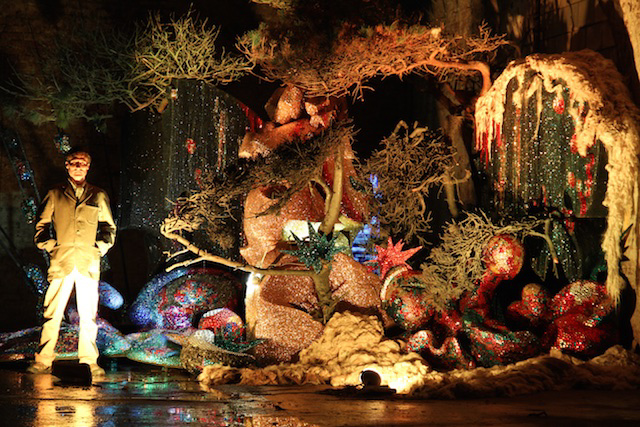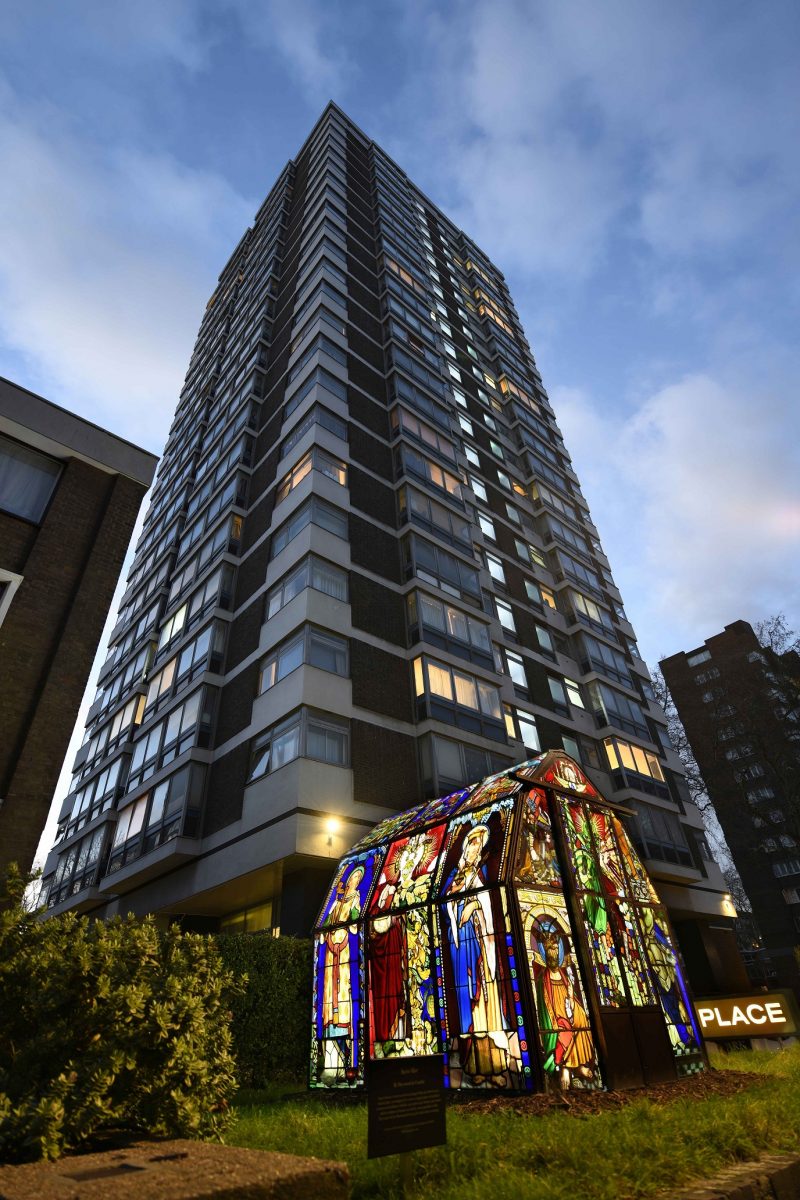Tony Heywood and Alison Condie chat to A&G about their world of garden rituals, Merseyside beachscapes, emotionally charged placemaking, and using live plant matter to create fantastical art for their new show This Land.

What are your earliest memories of garden ritual?
It really goes back to the very first recollections of home, repeatedly circling our family garden on a tricycle. Any repetitive action, with intention, can foster a sense of embodiment with place. Mowing, watering and pruning can all be considered ritual actions and ways of communing with, as well as ‘maintaining’, nature.
It is all to do with how we attend to and focus on our activities. We don’t need to rake a zen garden in order to shift our consciousness and way of being with nature in a garden setting.
Why is ritual in the garden important to you?
In the context of our work, which often involves creating living interactive environments, any simple ritual act, the pouring of water over a stone, ringing a bell, the placement of a personal significant object within the garden installation with intent, can become a powerful method of facilitating a deeper connection with the work.
Ritual actions allows us to intuitively create a feeling of embodiment. They may on the surface appear to be irrational activities, but on a subconscious level they can, we believe, extend the mind into the garden in a palpable way; in a manner that can promote a powerful and liberating existential experience. This is how a space can become activated and transformed into a significant deeply personal and emotionally charged place.

Where can we find some of your work at the moment?
An art gallery show near Liverpool opened last month at the Atkinson Gallery, Southport. Where our new work, This Land, fills three gallery rooms. It is a portrait of our experience of a specific area of British coastline: Formby in Merseyside. It includes film, poetry, sculpture, paintings and large wall-based organic assemblages. The works incorporate living plants, found objects and weaved and fabricated costumes made from beach material. The work is a representation of our time spent walking, meditating and performing in these costumes in the woods and shoreline at Formby on the Merseyside coast.

How do you choose where to create work?
Our work is always about exploring and then re-presenting our experience of specific landscapes. We may be commissioned by a public body, institution or gallery; in this instance, the site is chosen for us. If not, then it is usually simply because we find that we like a particular place and we would then start exploring the nature of that environment more deeply.
Three artists who are important to you in three words….
Ian Hamilton Finlay; place, language, spirit
Anthony Gormley; horizon, time, site
James Turell; cosmos, eternity, peace
Who are the people shaping how we see landscape?
Our experience of landscape is constantly being modified by a variety of media; adverts, films, literature, painting and photography, for instance, all promote a different understanding, in their own unique way, of what constitutes ‘landscape’.
‘Land’ in this understanding if the word, is raw, unprocessed nature. We then convert land into ‘landscape’ when we draw upon cultural representations of it. We often seek out the familiar as it has been framed for us in the media. In this sense, landscape images breed more landscape images. The West constantly re-constructs how it culturally frames and sees raw nature.
Landscape is the specific framing of nature through a cultural lens. Children often won’t know what adults mean by the term landscape. Which bit they say? Where does one landscape start and the other one finish? Landscape is in essence not a thing but a process. It is about selection and editing, via pre existing visual tropes.

When we think about how children and adults view landscapes…how might we address plant blindness?
Clearly having a garden at any scale allows us to become physically and emotionally far more closely involved experientially with the world of plants.
Plant consciousness is so important in our increasingly denatured world. It introduces us to ideas of interconnectivity with the non human, whether we believe plants to be sentient (which, by the way, we do) or not. Plant consciousness can be promoted through working within, caring for and nurturing our gardens; all of which promote a sense of interconnectedness with the natural world.
In essence, being attentive to how all the organisms in our gardens are working together – from insects to subterranean soil life to birdlife – illuminates the role and importance that plants play within this bigger cosmic cycle. From our relationship with plants we can really become aware of the role these remarkable organisms play within a bigger whole.
Your favourite garden.
We really enjoy Stourhead – a painterly, poetic and allegorical garden in the English landscape garden tradition. It is full of variety, surprise and delight.
Also, Ian Hamilton Finlay’s garden, Little Sparta, in the Pentlands Hills of Scotland, is a garden with a revolutionary agenda; pushing the boundaries of what a garden can be both philosophically and aesthetically.
Favourite plant.
Moss.
The garden you visit the most.
We actually look after many gardens in central London, on the Hyde Park estate. So we are actively gardening in them every week.
What are you thinking about this and next year?
- Ways in which to re-wild the conventional London formal square. A new aesthetic for inner urban garden landscapes that is more nature centric is badly needed.
- How to incorporate virtual / augmented reality into the experiences of visiting gardens.
- Trying to find our own piece of ground … one acre on which to create our own paradise.
The Atkinson Gallery is temporarily closed. Visit This Land to explore videos and images of the exhibition and to stay up to date on its reopening.





